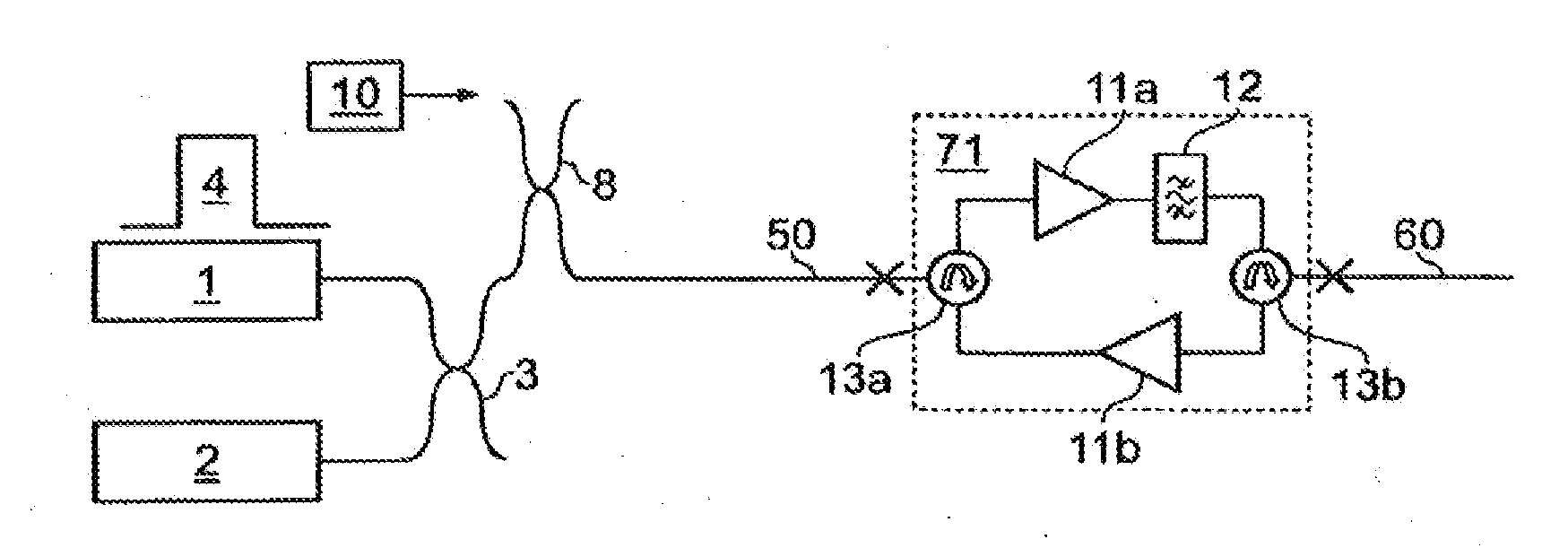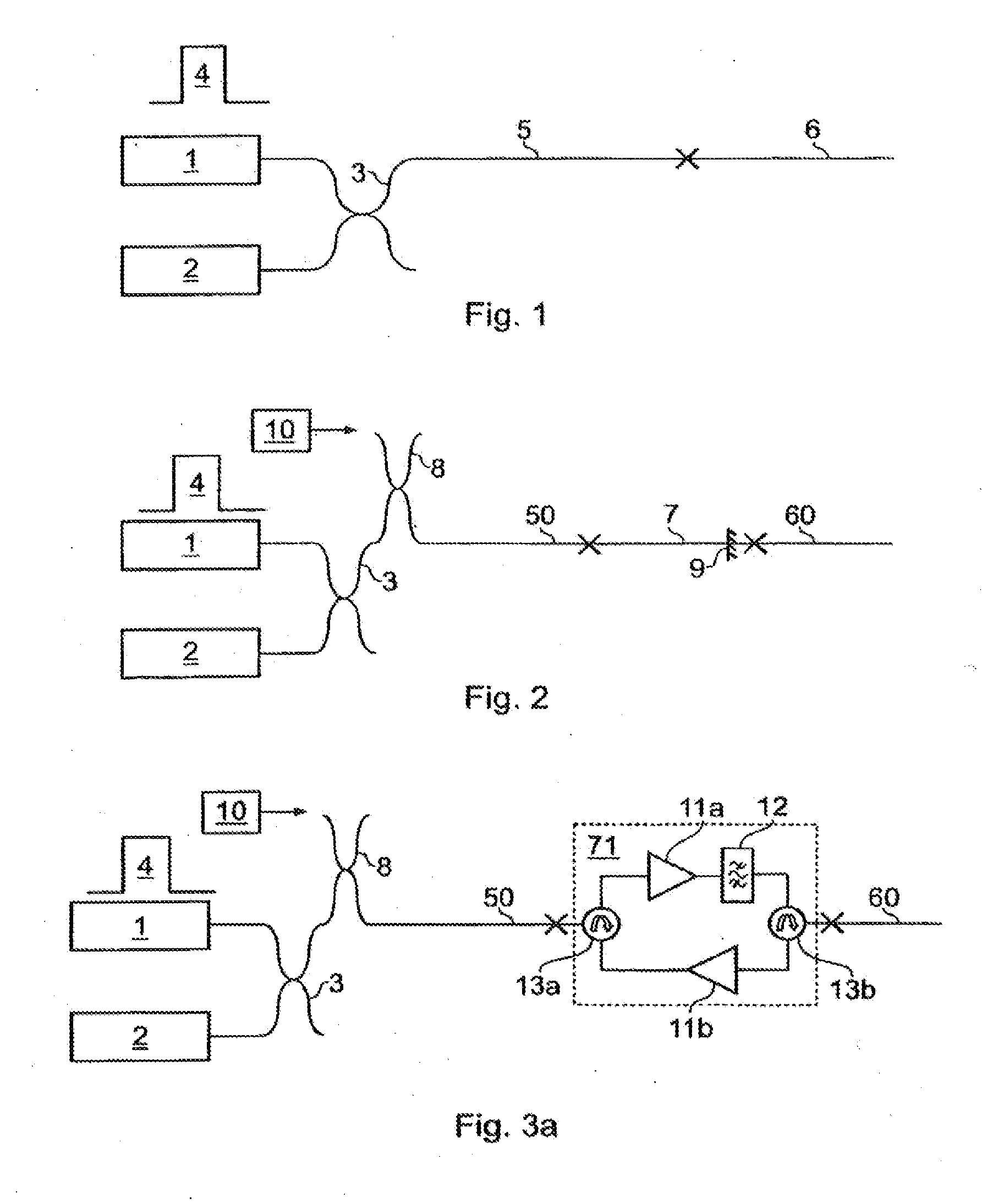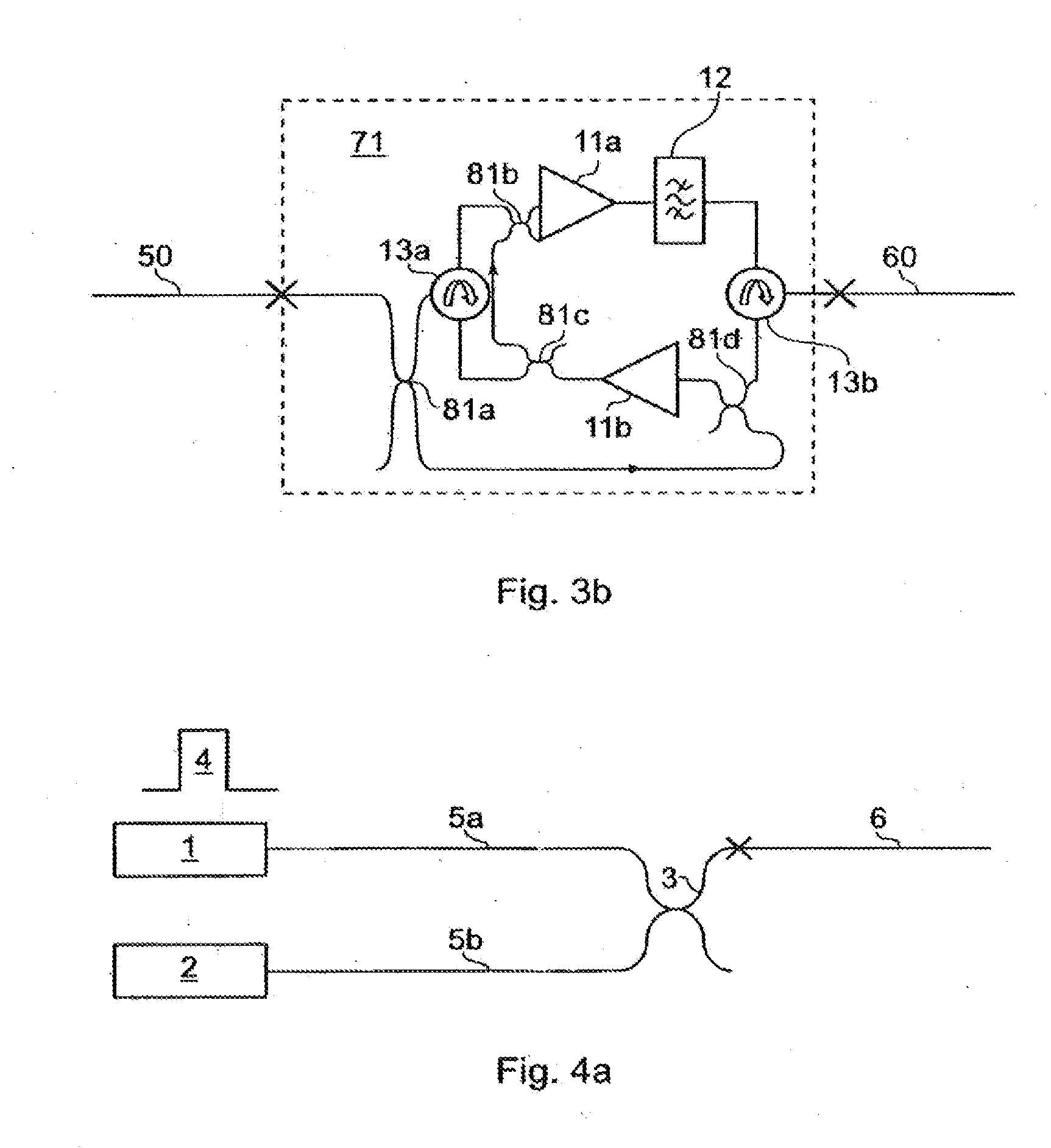Optical time domain reflectometry
a reflectometry and optical time domain technology, applied in the field of optical fiber sensors, can solve problems such as limited peak power
- Summary
- Abstract
- Description
- Claims
- Application Information
AI Technical Summary
Benefits of technology
Problems solved by technology
Method used
Image
Examples
Embodiment Construction
[0027] According to an embodiment of a first aspect of the invention, a method can be provided in which the backscatter power from the remote end of an optical fiber can be increased, whilst allowing the power launched into the fiber to remain below non-linear limits. In this method, the optical fiber is made up of at least two sections of fiber, such that the numerical aperture increases monotonically with increasing distance from the instrumentation. This method is illustrated in FIG. 1, where an OTDR backscatter measuring apparatus, represented schematically by a source 1, detector 2 and coupler 3, launches high power pulses 4 into a first fiber 5. The intensity of pulses 4 is selected to be below the threshold for the non-linear effects of relevance (depending on the application of the system and its design, the limiting effects could be SRS, SBS, SPM or others). The section of primary interest is a second fiber 6 which is connected to fiber 5 at a distance Lf. Fiber 5 is select...
PUM
| Property | Measurement | Unit |
|---|---|---|
| temperature | aaaaa | aaaaa |
| water depth | aaaaa | aaaaa |
| water depth | aaaaa | aaaaa |
Abstract
Description
Claims
Application Information
 Login to View More
Login to View More - R&D
- Intellectual Property
- Life Sciences
- Materials
- Tech Scout
- Unparalleled Data Quality
- Higher Quality Content
- 60% Fewer Hallucinations
Browse by: Latest US Patents, China's latest patents, Technical Efficacy Thesaurus, Application Domain, Technology Topic, Popular Technical Reports.
© 2025 PatSnap. All rights reserved.Legal|Privacy policy|Modern Slavery Act Transparency Statement|Sitemap|About US| Contact US: help@patsnap.com



